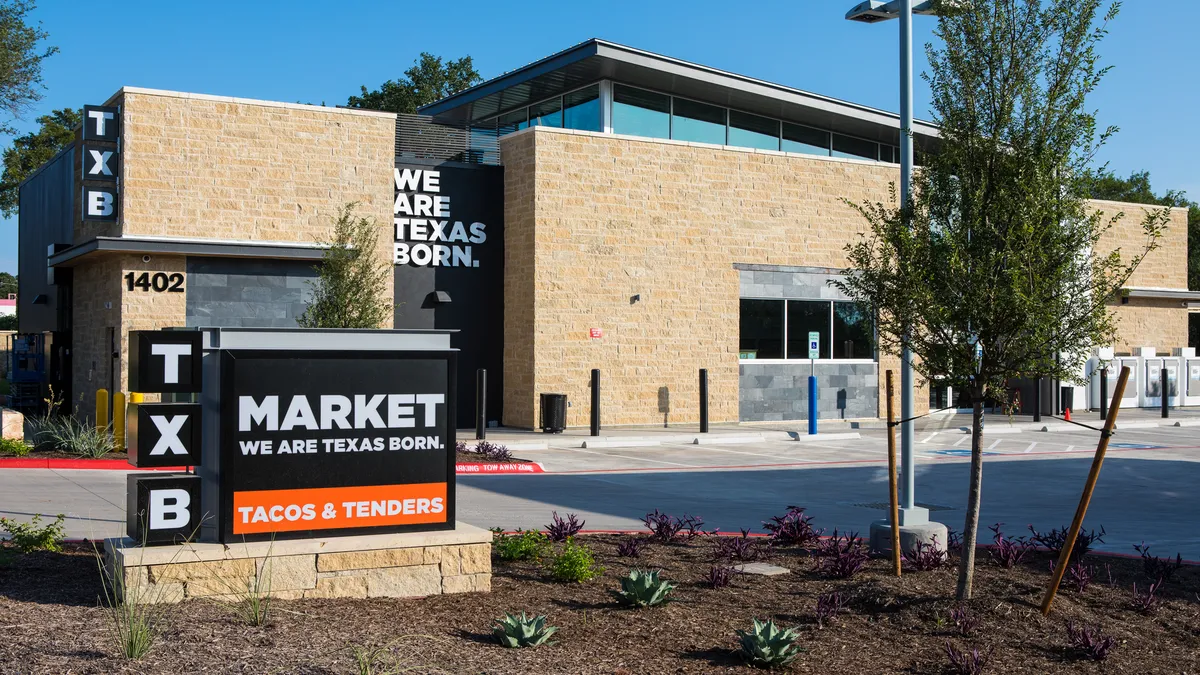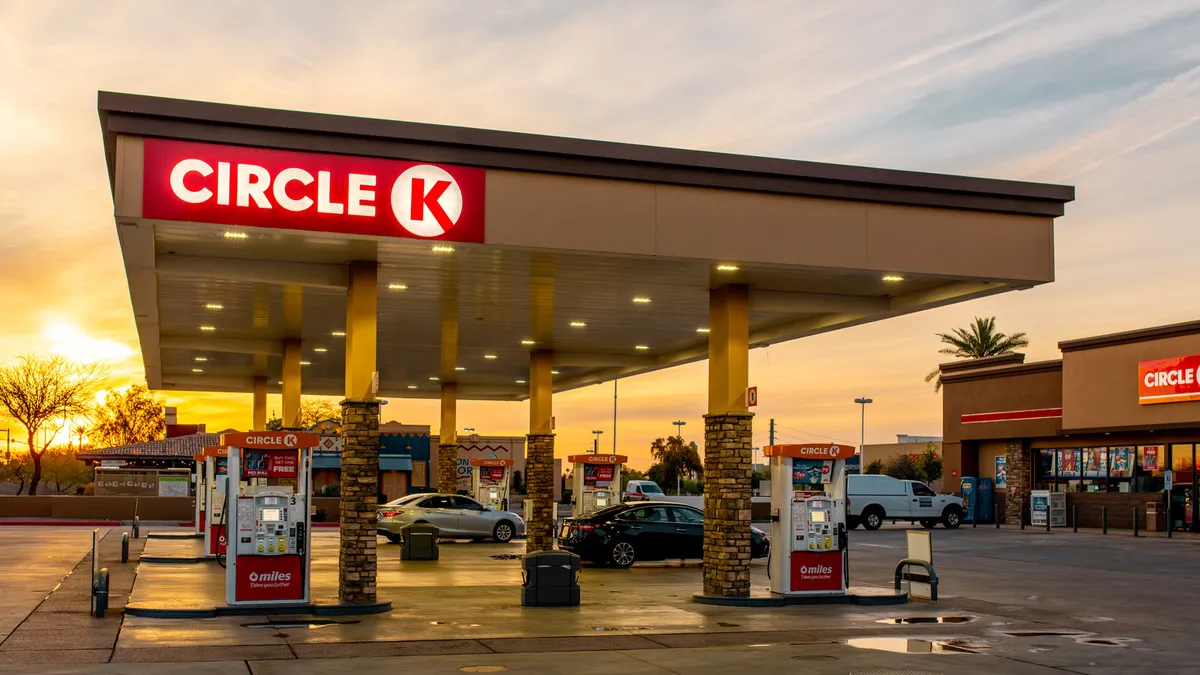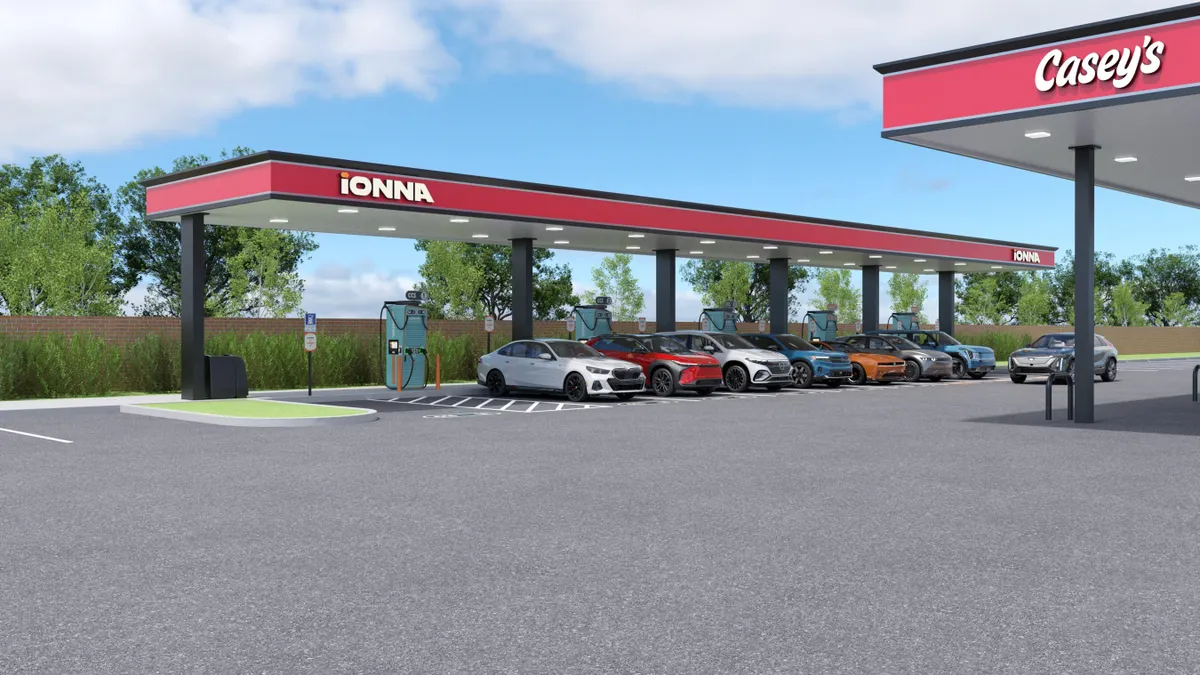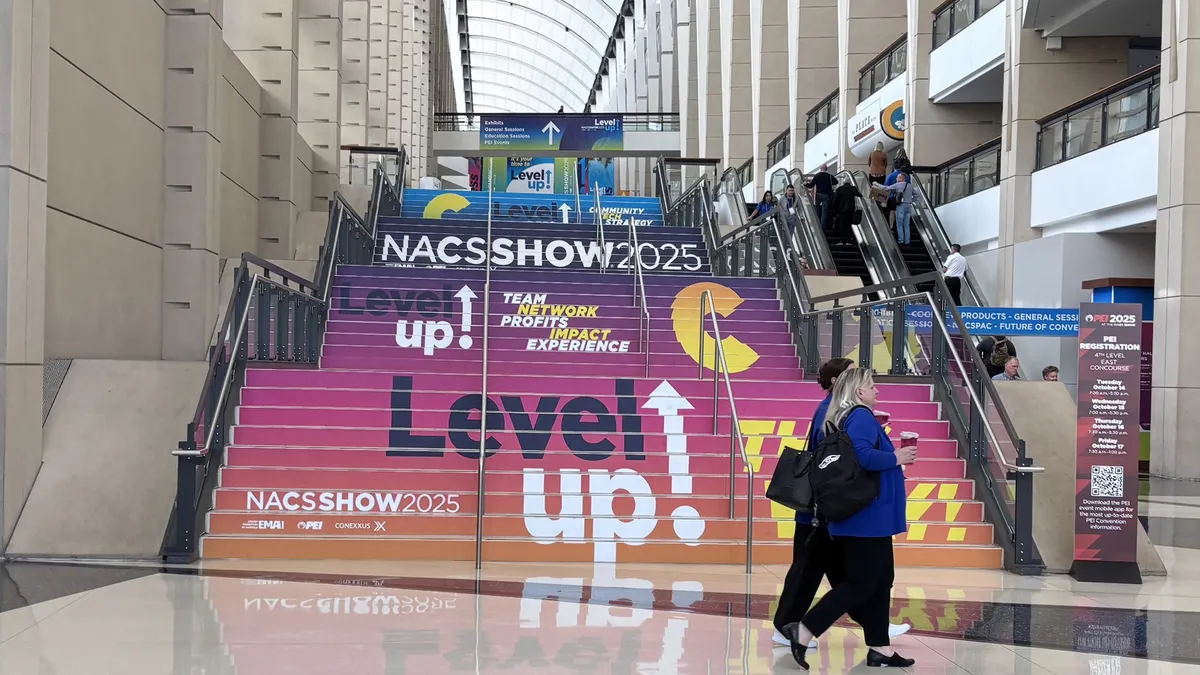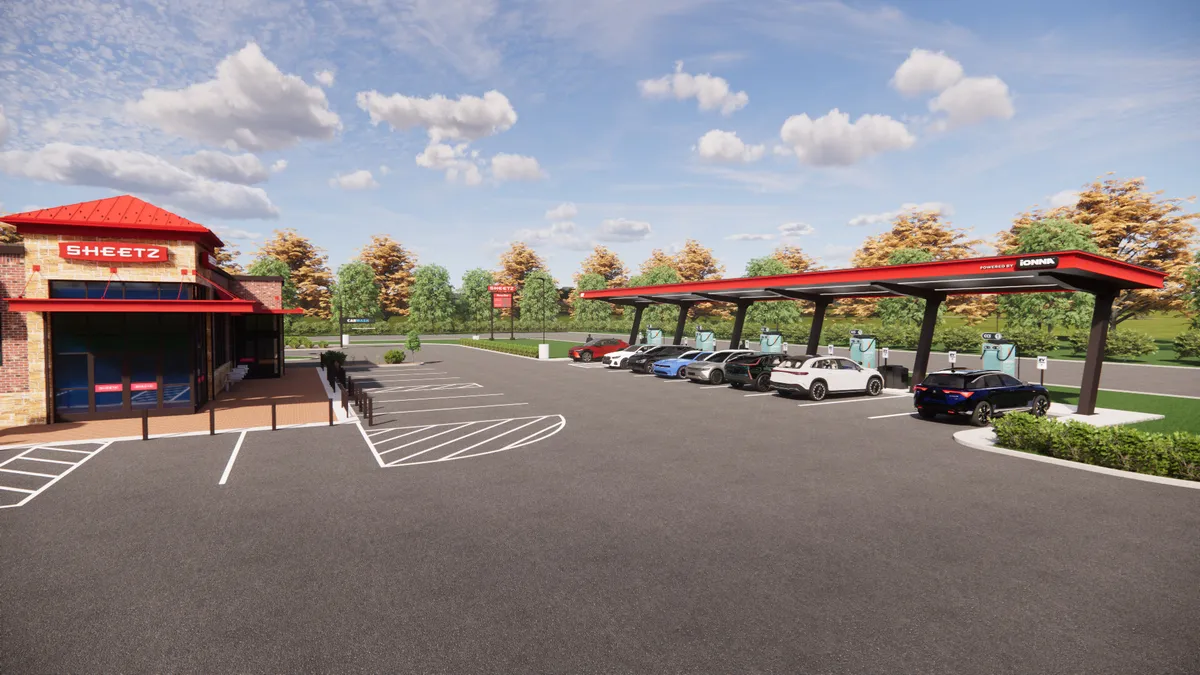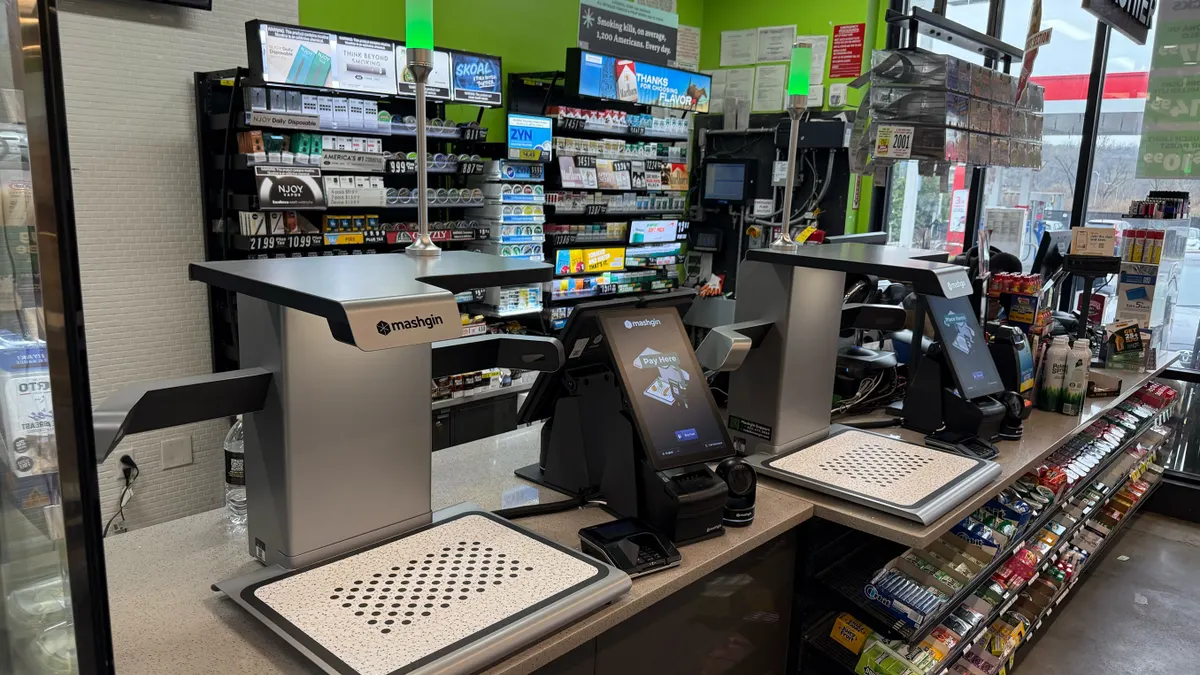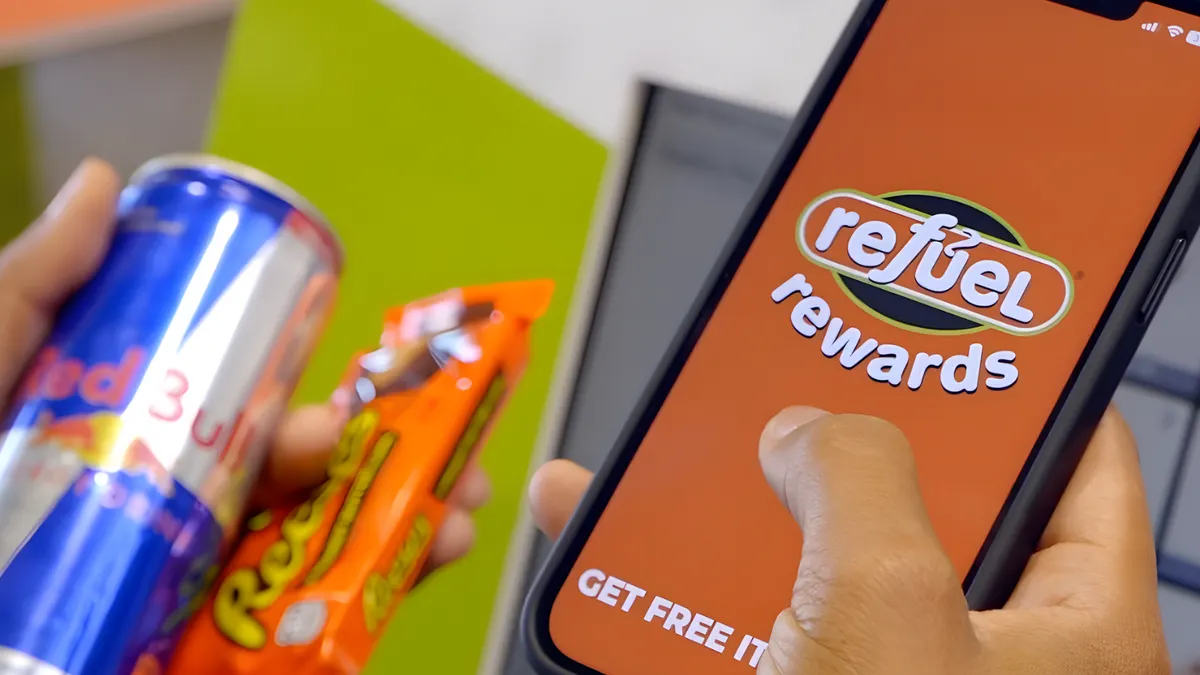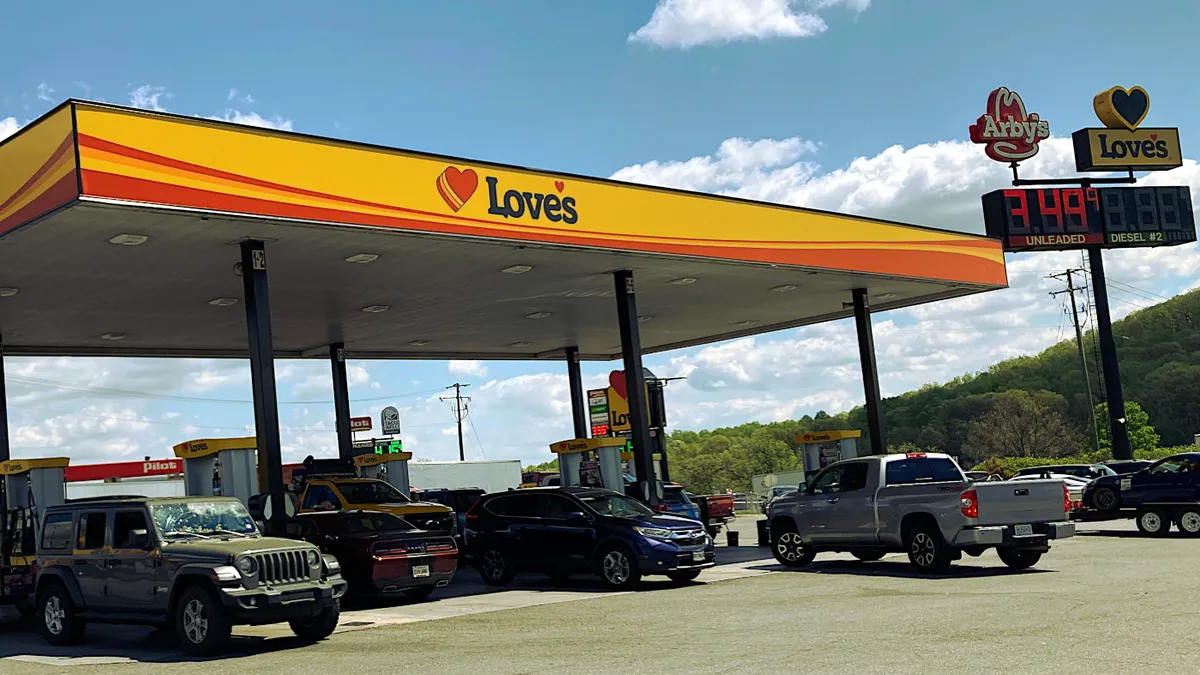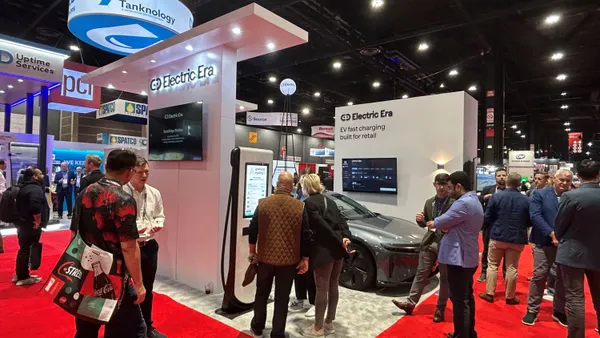When discussing convenience store retail media networks, big players like 7-Eleven, Casey’s General Stores or Wawa may initially spring to mind. However, Texas-based convenience retailer TXB — whose 53 locations pale in comparison to its larger counterparts — has been making big moves in the space as well.
“Over the past several years, we’ve built a powerful digital ecosystem — featuring digital pump screens, in-store displays, loyalty integration, mobile app engagement, gamification, banners, email, and push messaging,” said Ben Hoffmeyer, TXB’s vice president of marketing and merchandising.
While large players may have scale, smaller operators offer their own benefits to potential advertisers.
“The client base that you reach by taking that approach is very different, very complementary, and in many cases, more interesting than if you try the usual larger retailers,” said Enrique Muñoz Torres, general manager of Bridg, a division of commerce media company Cardlytics.
He added that getting involved in retail media can look intimidating from the outside, since it’s a complicated area with many vendors.
“There's so many options that inaction can be tempting, although that's an unfortunate outcome,” said Muñoz Torres.
Matt Riezman, a partner at c-store consultancy NexChapter, agreed. He added that while getting into retail media will require some baseline of technology, like customer data capturing or in-store screens, it’s better for companies to start learning before they have all the technology in place. Plus, small retailers often have greater capabilities than they think.
“If you have a loyalty program and a website, that's enough to get started.”
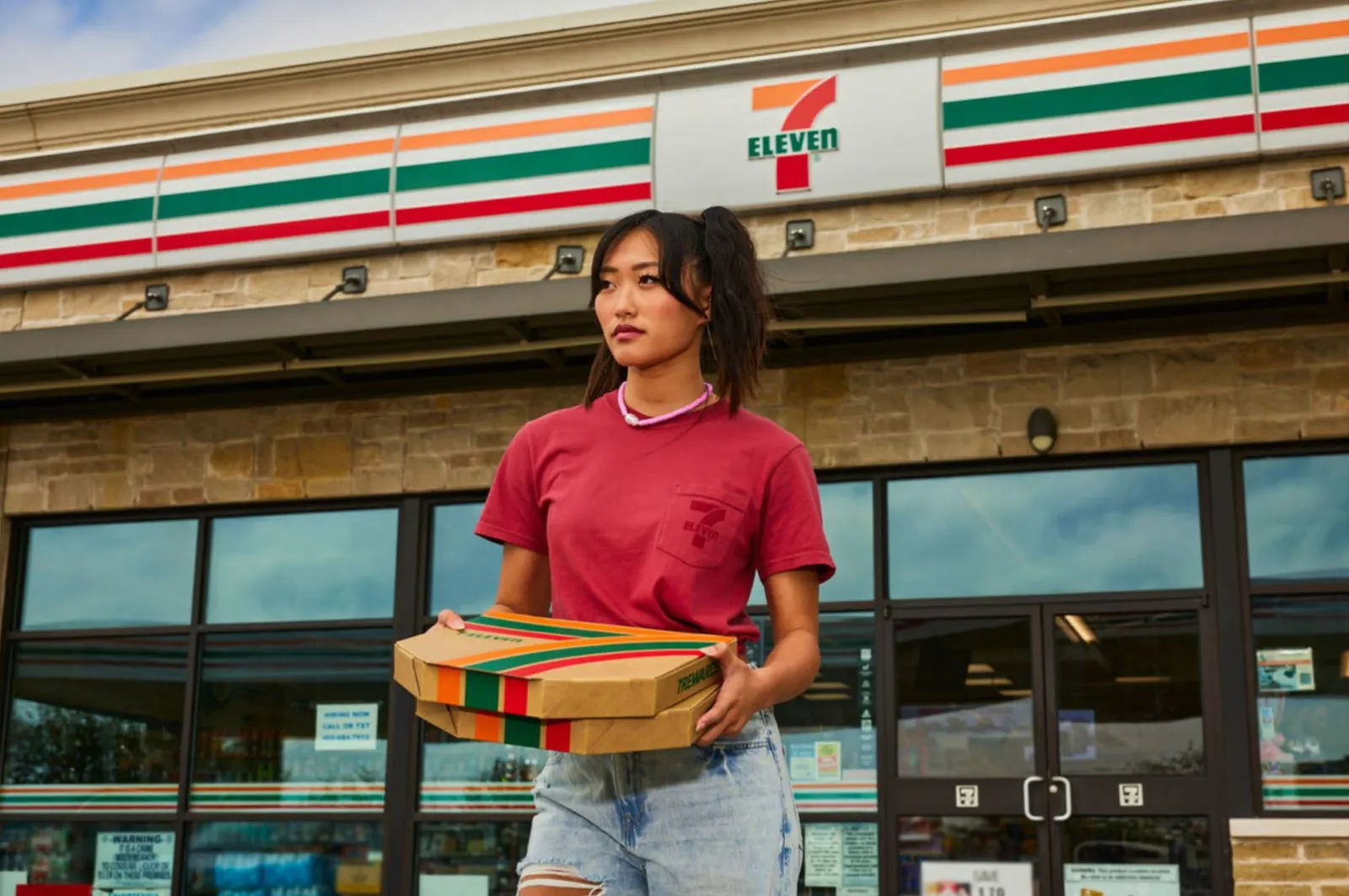
Benefits of retail media in smaller retailers
Retail media networks can bring multiple benefits. The first and most broadly applicable is incremental sales.
“What is there not to love about making money out of your space or out of your data?” asked Muñoz Torres.
Stores should be seeing more than just additional sales, however. They should also see a boost in sales of advertised products, said Riezman. If not, they may want to revisit their program.
TXB has seen success on both of these fronts, with not only incremental sales but also “stronger sales performance and faster customer adoption” coming from campaigns around both new item launches and core brand items, said Hoffmeyer.
Retail media can also open new ways to partner with CPGs and other companies who might want to reach a retailer’s customer base, added Muñoz Torres.
One benefit that smaller retailers can have is their flatter corporate structures, as decisions are often made and projects implemented quickly. That also means there’s less of a chance of the marketing and merchandising teams — both of which need to be involved — coming into conflict over the program.
“A lot of these smaller retailers, those are the same team. Sometimes it's the same person,” said Rieszman. “That's a serious advantage.”
All that said, retailers need to be aware of how retail media impacts the shopping experience in their stores and on their digital platforms.
“Whether you’re a big operation with hundreds of different stores, or you’re a much smaller, independent thing, and at any level of scale that you have, there are solutions that I believe should be able to help you.”

Enrique Muñoz Torres
General manager of Bridg
Hoffmeyer noted that “by providing fewer but more impactful messages across multiple touchpoints, TXB has improved customer engagement and driven measurable sales gains.
The program gives TXB “very high revenue per 1,000 impressions” as well as click-through rates at or exceeding 90%, “which far exceed industry benchmarks and our initial expectations,” he added.
How to dive in
Riezman said retailers should first decide what they want out of retail media, then build a strategy to achieve that before weighing providers and technology. If they just begin shopping, they may find interesting solutions that ultimately won’t work for their business or aren’t cost effective.
TXB followed Riezman’s blueprint.
“We developed a clear strategy, roadmap, and supplier pitch decks,” said Hoffmeyer. ”We also defined our key objectives for the retail media network: to reduce guest friction while enhancing customer value, brand equity, sales and overall profitability.”
Retailers also need to decide if they are going to join a broader network or build their own. The latter brings several challenges for smaller operators since CPGs may be hesitant to purchase ads from a lesser known company.
“It will be a lot harder to go and sell that inventory as a five- to 10-store chain directly to a Coke or a Red Bull, but I think there's a huge opportunity to aggregate a lot of those networks together,” said Nick Larkins, co-founder and chief product officer of audio retail media network QSIC.
This can make aggregation vital for many smaller companies. Even EG America, the U.S. arm of retailer EG Group, recently joined Axonet’s platform. However, Riezman noted that retailers need to be aware of the costs of those partnerships. These will vary based on what tools a retailer seeks to use.

Additionally, they need to be clear about what rights they’re handing over to their data in any agreement. It would sting to want to move away from a retail media partner, only to find they have contractual access to the store’s data for years to come.
And it’s important for retailers to remember that it’s not all or nothing — they can do some retail media in-house while other features run through partnerships.
TXB, which has a dedicated marketing team member to run the program, also has a wide range of partners, including Dover Fueling Solutions and Paytronix, and continues to add partnerships where it makes sense, said Hoffmeyer.
“TXB recently launched non-endemic advertising in partnership with Moment Science and Brand Mobile and the early results have been outstanding.”
Making it work
For most retailers, what success looks like depends on their goals.
For example, is the program garnering enough revenue to make a profit?Is the data being generated useful to the business, and are any outside partnerships helping the company?
Additionally, is the network giving CPGs the benefits they are looking for? If not, retailers may see partners pull back on advertising after a quarter or two, said Muñoz Torres.
Riezman also emphasized that learning about retail media and building a program takes time and patience. Retailers can also learn from those who’ve done it before, as well as providers or advisors, through events like conventions, said Riezman.
TXB, which worked with NexChapter on its retail media platform, also attended multiple conferences on the topic and joined multiple advisory and share groups.
Experts agreed that it’s worth retailers exploring retail media, even if operators don’t ultimately jump in.
“Whether you're a big operation with hundreds of different stores, or you're a much smaller, independent thing, and at any level of scale that you have, there are solutions that I believe should be able to help you,” said Muñoz Torres.
Editor’s note: This article was updated to correct Nick Larkins’ title.



